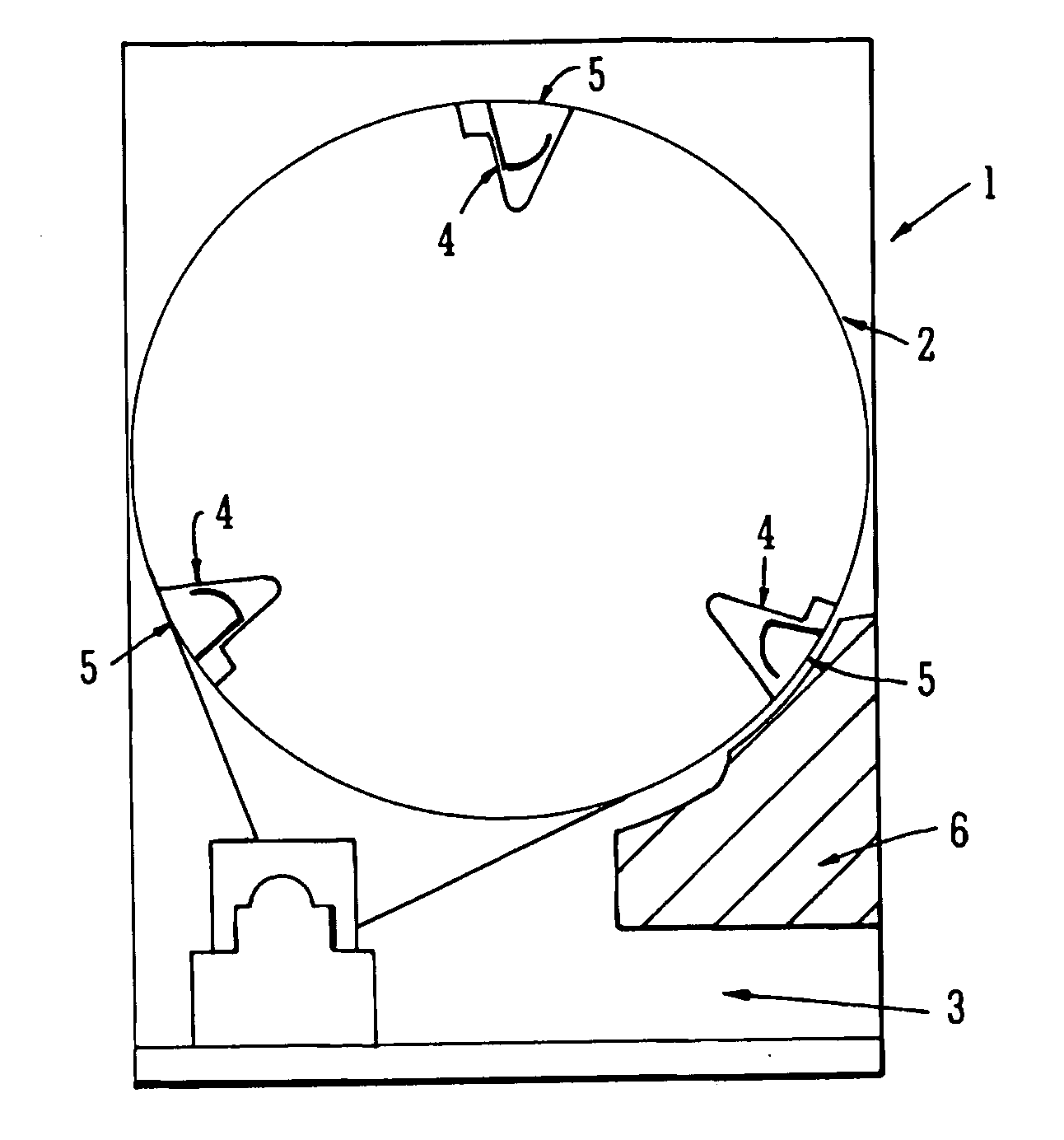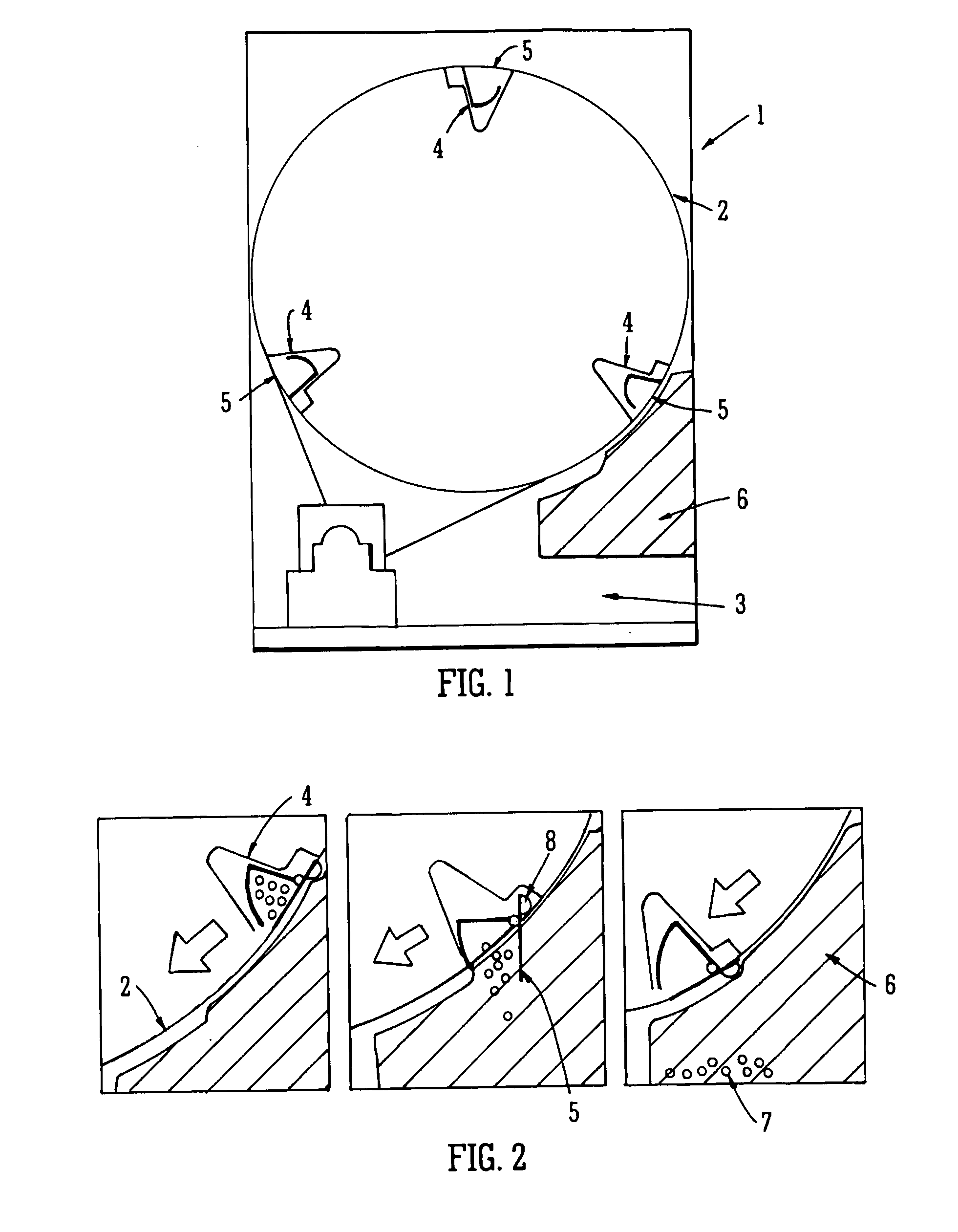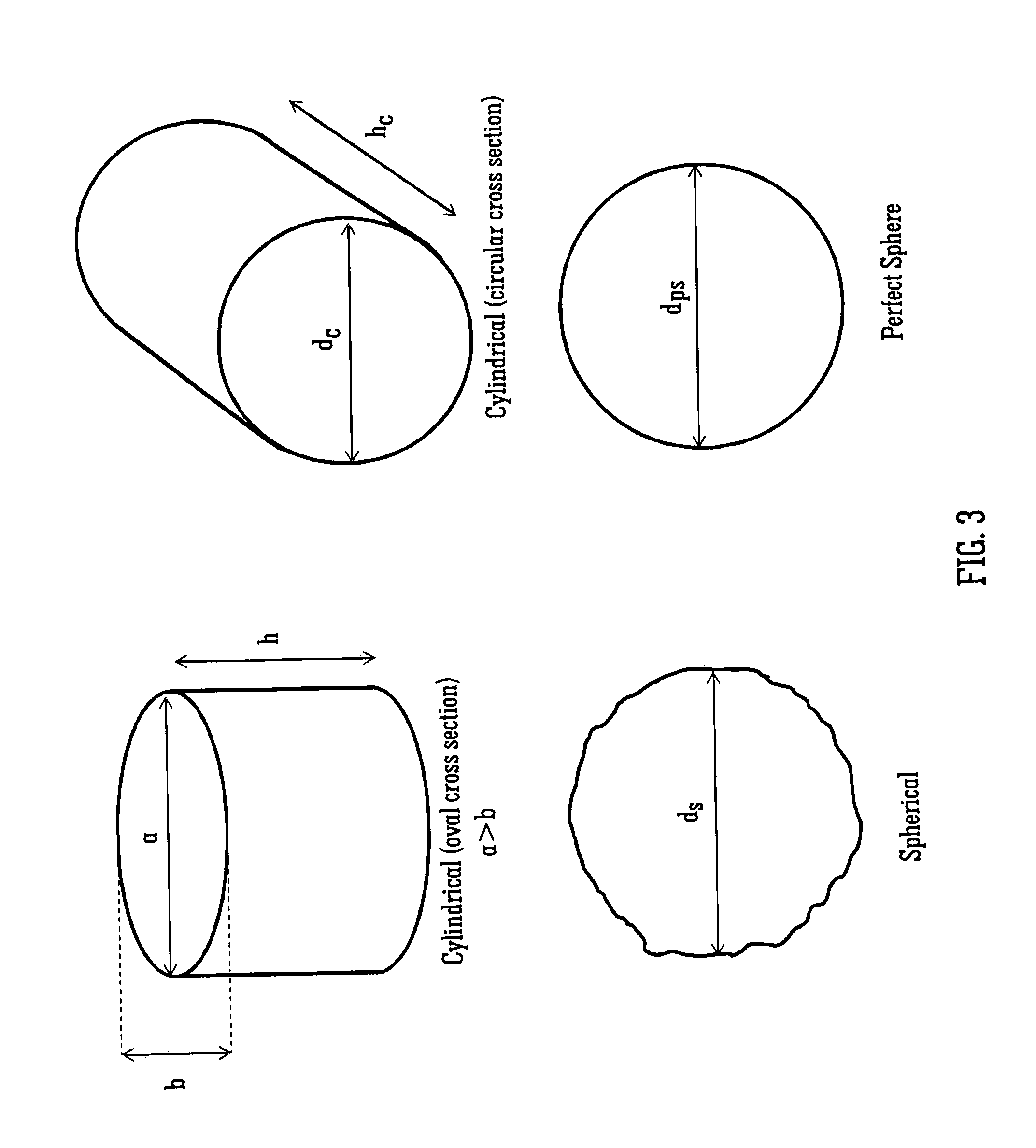Improved cleaning apparatus and method
a technology for cleaning apparatus and substrates, applied in the direction of other washing machines, laundry driers, textiles and paper, etc., can solve the problems of increasing the difficulty of reducing the water level (and hence energy and detergent) in a pure aqueous process, increasing the cost and environmental impact of the environment, and increasing the difficulty of rinsing water. the effect of speeding up the rotation of the cage can
- Summary
- Abstract
- Description
- Claims
- Application Information
AI Technical Summary
Benefits of technology
Problems solved by technology
Method used
Image
Examples
Embodiment Construction
[0086]The apparatus according to the invention may be used for the treatment of any of a wide range of substrates including, for example, plastics materials, leather, paper, cardboard, metal, glass or wood. In practice, however, said apparatus is principally designed for use in the cleaning of substrates comprising a textile fibre comprised in such as textile fibre garments, and has been shown to be particularly successful in achieving efficient cleaning of textile fibres which may, for example, comprise either natural fibres, such as cotton, or man-made and synthetic textile fibres, for example nylon 6,6, polyester, cellulose acetate, or fibre blends thereof.
[0087]Most preferably, the solid particulate cleaning material comprises a multiplicity of polymeric particles or a mixture of polymeric particles and non-polymeric particles. The particles are of such a shape and size as to allow for good flowability and intimate contact with the soiled substrate. A variety of shapes of partic...
PUM
 Login to View More
Login to View More Abstract
Description
Claims
Application Information
 Login to View More
Login to View More - R&D
- Intellectual Property
- Life Sciences
- Materials
- Tech Scout
- Unparalleled Data Quality
- Higher Quality Content
- 60% Fewer Hallucinations
Browse by: Latest US Patents, China's latest patents, Technical Efficacy Thesaurus, Application Domain, Technology Topic, Popular Technical Reports.
© 2025 PatSnap. All rights reserved.Legal|Privacy policy|Modern Slavery Act Transparency Statement|Sitemap|About US| Contact US: help@patsnap.com



